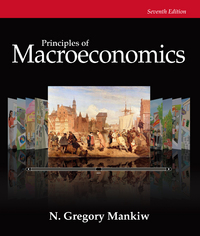Question
the Social Security system is a pay as you go retirement plan. Money taken from workers checks is transferred to retirees. At one time there
the Social Security system is a pay as you go retirement plan. Money taken from workers checks is transferred to retirees. At one time there were 42 workers per retiree; today the ratio is now under 3 to 1. By 2030, the ratio is expected to fall to 2 to 1. The only way to keep the current system solvent is to raise taxes on those currently working or cut benefits to those already retired. Neither of these options is particularly pleasant. Another option has been debated for years, privatization. Under this plan, the government would still deduct money from our checks, but it would be put into personal retirement accounts under our own individual (but limited) control. Carefully read the information below, and then do three things with the data. (1) Make two columns (one for costs and the other for benefits) and place each piece of information in the correct column. (2) Prioritize each list, from most important to least important. (3) Write a three-paragraph analysis. Paragraphs one and two should explain why you feel the top two costs and top two benefits are the most important. Finally, paragraph three is your analysis, based on your interpretation of all the facts listed below, explain whether you believe we should privatize Social Security or not (this is the heart of the paper and should be 8-10 lines long). The paper should be word-processed and no more than one page in length. 1. The stock market has averaged a 7% return on peoples' investments over the last 50 years, which is significantly higher than the 1-2% or less most will receive under the current Social Security plan. 2. Many people close to retirement could be harmed by a sudden drop in the market, reducing the value of their retirement accounts just when they need it the most. 3. Any privatization plan would have much higher administrative costs than our current transfer program, reducing the potential returns. 4. Disabled workers and widows of workers who die young would see a reduction in benefits. 5. Under privatization, people would be more in control of their own retirement. 6. Social Security is indexed to protect against inflation (there is a COLA tied to the CPI), private retirement accounts would not be able to guarantee this protection. 7. If we try to privatize, the only way to continue to pay for today's retiree's benefits and put money into separate accounts for each individual would be to raise taxes or cut benefits or both (at least in the short run). 8. Instead of the government simply paying out the collected money in transfer payments, this money could now be funneled into investments across the country leading to more economic growth. 9. Privatization may lead to a loss of "community", the idea that we are all in the same retirement plan together. 10. Under privatization, even the poor would have a chance to invest in the stock and bond markets normally only available to the wealthy. 11. Some people are concerned that many people are totally unprepared to choose the investment strategy best suited to their individual needs. This could lead to people making bad choices and having less retirement income. 12. If you die before retirement age the money in the account would pass to your heirs, not the government. 13. There would be limited investment choices to prevent people from choosing extremely risky investments.
Step by Step Solution
There are 3 Steps involved in it
Step: 1

Get Instant Access to Expert-Tailored Solutions
See step-by-step solutions with expert insights and AI powered tools for academic success
Step: 2

Step: 3

Ace Your Homework with AI
Get the answers you need in no time with our AI-driven, step-by-step assistance
Get Started


